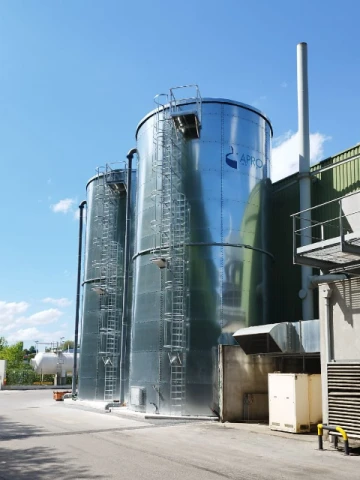Digestate Storage
- Wide range of materials: glass-fused-to-steel, epoxy-coated, stainless steel, or galvanised steel
- Optimal sealing with a mastic sealing or PVC liner, depending on the model
- Capacities from 30 to 10,000 m³, with quick assembly without welding
- Durable, modular, and low-maintenance solutions
Our liquid digestate storage tanks are widely used on biogas plants. They represent the final storage facility before the recovery and valorisation of digestate.
Our Solutions for Digestate Storage
Digestate, the by-product of anaerobic digestion, must be stored securely and appropriately before it can be used for agronomic or energy recovery purposes. Our storage solutions address the technical, regulatory and economic constraints of this crucial stage in the biogas process. We offer a complete range of tanks that are designed to ensure the storage is sealed, durable and safe, while optimising operating and maintenance costs.
Glass-fused-to-steel tank with mastic sealing
Glass-fused-to-steel offers complete chemical inertness when in contact with digestate. It is highly resistant to abrasion, and its durability has been proven when storing industrial or agricultural effluents of various types. The type of cover used may vary depending on the quality of the digestate and the amount of residual gas produced.
Epoxy-coated steel tank with mastic sealing
This type of tank is coated with a highly resistant industrial epoxy, providing effective protection against the corrosive nature of effluents from anaerobic digestion. The mastic seal ensures a perfect seal. The type of cover used may vary depending on the quality of the digestate and the amount of residual gas produced.
Stainless steel tank with mastic sealing
Stainless steel is renowned for its exceptional corrosion resistance, enabling long-term storage. As a solid-mass material, it is highly resistant to abrasion when handling thick materials or effluents with a high solids content. Its mechanical strength and impact resistance are unmatched. The type of cover used may vary depending on the quality of the digestate and the amount of residual gas produced.
Galvanised steel tank with a PVC liner
The most economical solution is the galvanised steel tank with a PVC liner. It is primarily intended for outdoor storage and is suitable for short-term use. Its durability is more limited than that of coated or stainless steel tanks, and the presence of a liner makes operation and maintenance more demanding. The type of cover used may vary depending on the quality of the digestate and the amount of residual gas produced.
Technical features of our solutions
Our digestate storage tanks are available in capacities ranging from 5 to 10,000 m³, for installation in France or overseas. They are quick to assemble, with no welding or work at height required. The tanks are demountable and can be transported in standard containers. Our tanks provide reliable, cost-effective solutions that are quick to implement and modular in terms of equipment, requiring minimal maintenance.
Planning a project?
Are you working on a digestate storage project? Contact our team for personalised advice!
FAQs - Digestate Storage
Our digestate storage solutions have been recognised for decades in the field of industrial and agricultural biogas production. Here, we answer the most frequently asked questions regarding their capacity, maintenance, and optimal operating conditions.
What is the capacity of digestate storage solutions?
A wide range of standard sizes is available, with capacities from 5 to 10,000 m³.
How can digestate storage solutions be maintained?
Maintenance includes checking equipment such as mixers, pumps, and tank linings. Regular inspections are recommended every two years to prevent deterioration and ensure optimal equipment performance.
What are the optimal conditions for digestate storage?
The ideal conditions for digestate storage include installation in stable, well-ventilated areas, with strict control of temperature and humidity parameters to prevent the formation of undesirable gases and premature equipment degradation.
Other Applications with APRO Industrie Tanks
Discover the various applications of APRO Tanks
Fire Water Storage
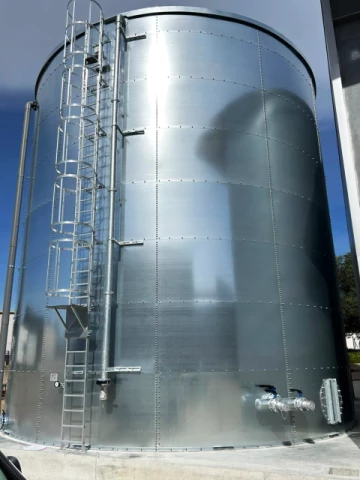
Drinking Water Storage
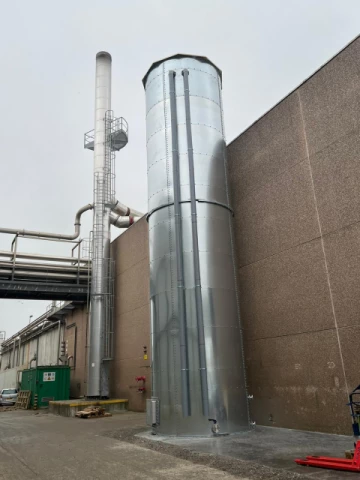
Process Water Storage
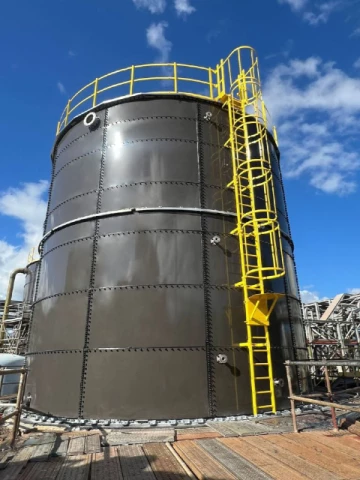
Sludge Storage
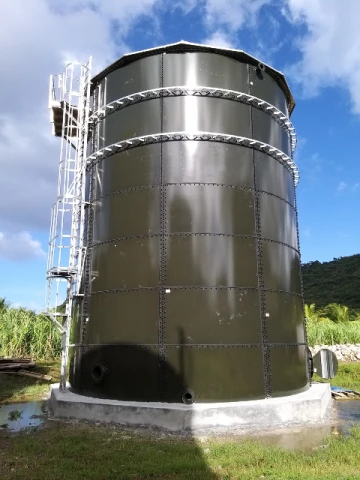
Urban and Industrial Effluent Storage and Treatment
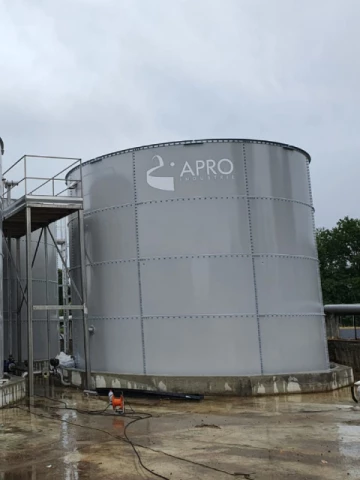
Storage of Osmosis and Demineralised Water
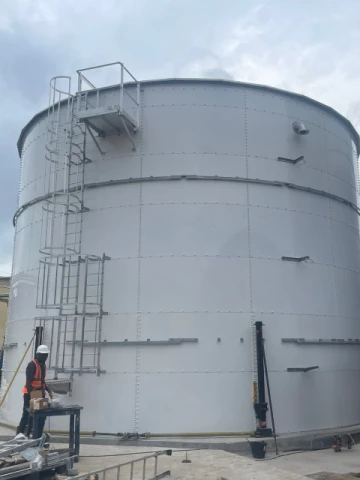
Irrigation and Groundwater Storage
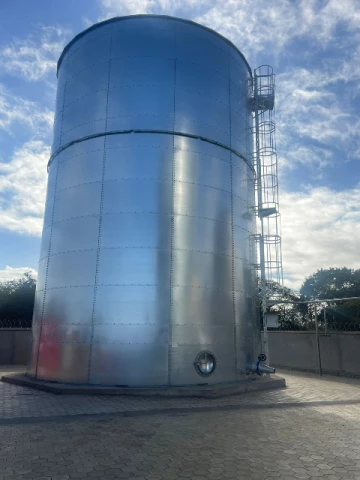
Leachate Storage
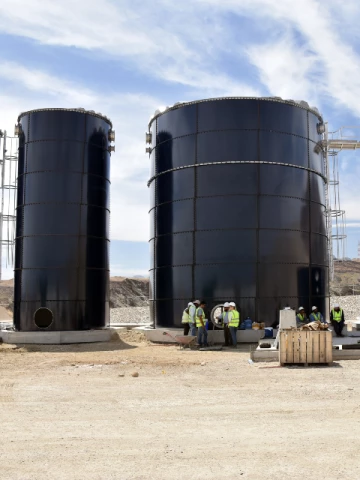
Vinasse and Molasses Storage
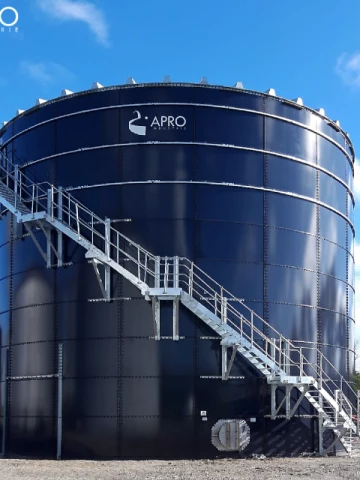
Slurry Storage
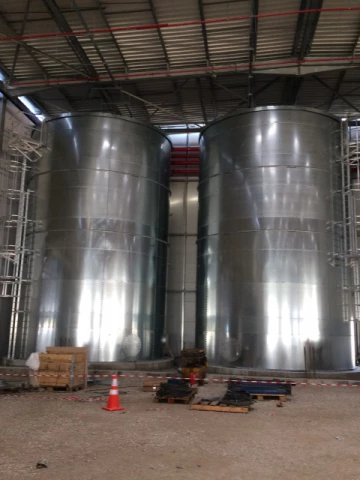
Methanisation, Digestion, Fermentation
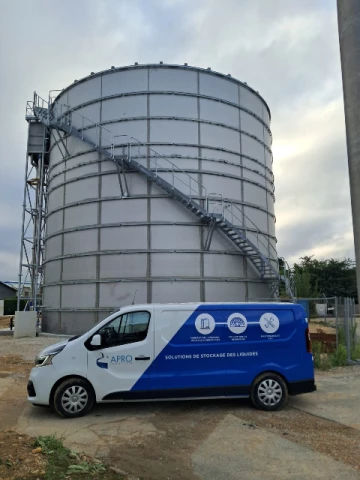
Rainwater Storage
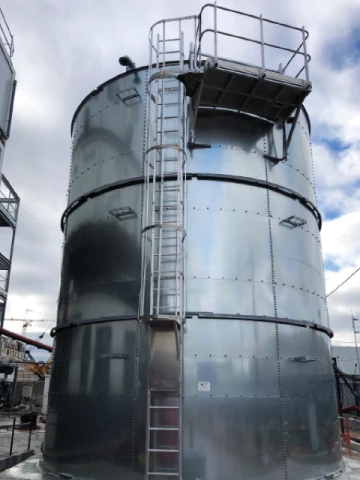
Recovery of Firefighting Water
